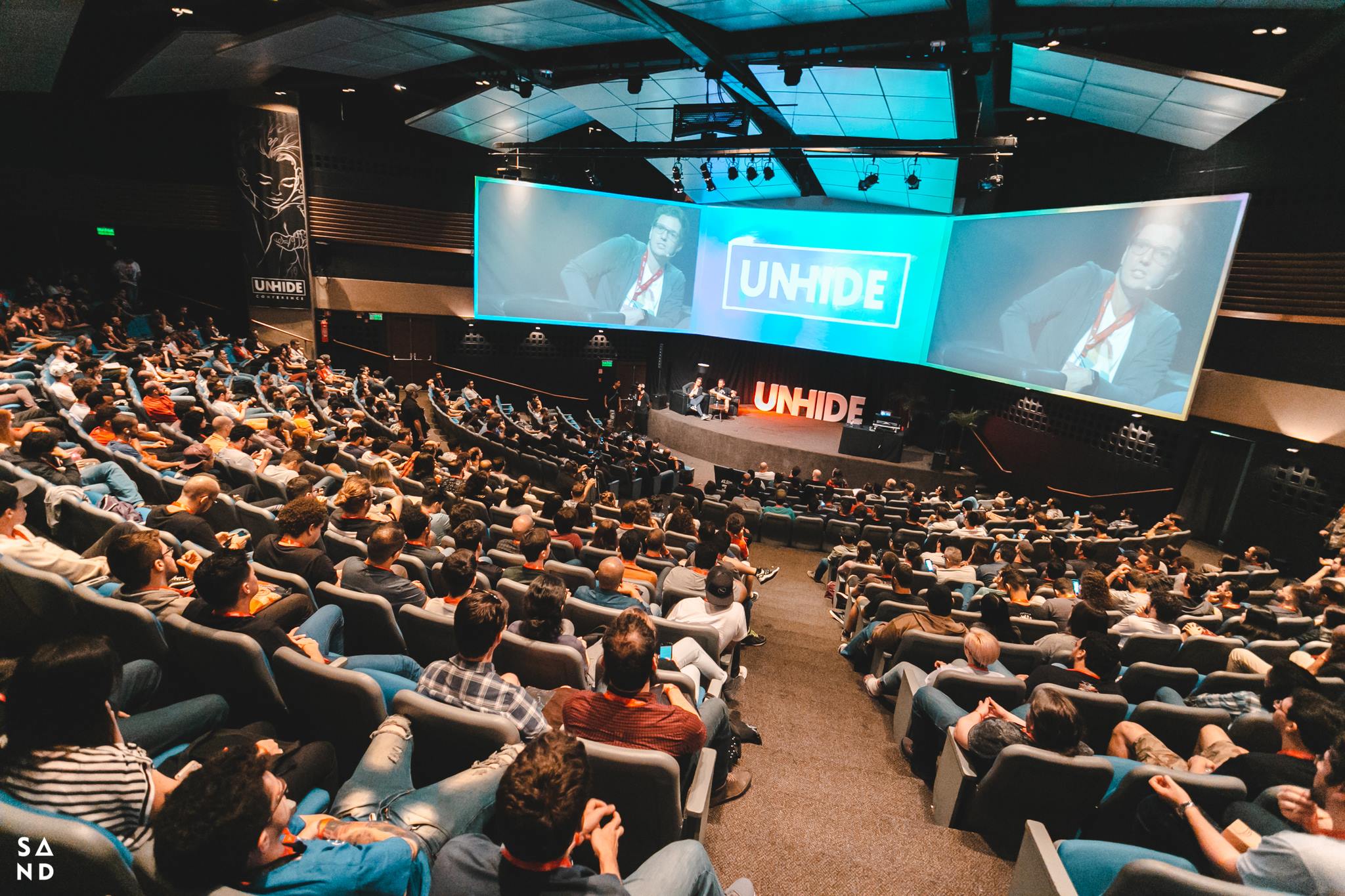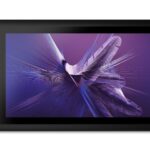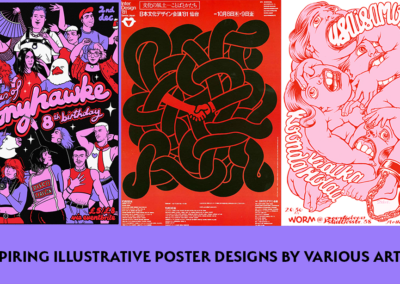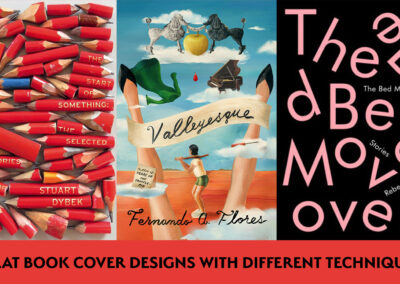Welcome to the sixth interview in the Let’s Talk Art series. We will be talking about freelancing, how to give your work more visibility and illustration software.
We talk to Tracie Ching an artist living in Washington, U.S. Tracie has been working in the industry for many years and has developed many skills during her career as an illustrator. Tracie is currently a freelance artist, challenged with new and exciting projects every day. Most, if not all of Tracie’s work is created with Adobe Illustrator.
This interview is written by Jack Woodhams, the founder of PosterSpy which is an online showcase platform for poster artists. We would like to thank everyone who has responded positively to this series so far and we hope you enjoy what´s to come.

Tracie Ching at Awesomecon 201
So, let´s talk art!
Tell us a little about yourself, how did you first get into illustration?
The story of how I got into illustration is a bit crazy. I originally went to school for Fine Art, earning a BFA in 2009 with a concentration in mixed media sculpture. It is not an excuse that the Great Recession was the sole reason I was unemployed after graduation, given the nature of my degree, but it certainly made it difficult to find work of any kind.
While I did my job-hunting I attempted to find a lucrative outlet for my artistic ability, so I began teaching myself Creative Suite. Looking back, it seems somewhat arrogant that my plan was to just make myself into a graphic designer, but in the end, that’s what I did. Once I’d become somewhat familiar with CS I tried to diversify to help build up my skills and start gaining some real design footholds. I began doing occasional design work for VC Ultimate, an ultimate Frisbee company and worked on personal projects to build my portfolio, specifically vector pop-culture portraiture.
What really paid the bills, was my part-time office gig. My design skills eventually landed me a full-time position at my office gig, and later I earned the title as the company’s graphic designer. Simultaneously I became Lead Designer for VC Ultimate, with whom I still work today. Those personal projects eventually created a portfolio that allowed me to work with several pop culture galleries.
I do not over exaggerate when I say that I worked 16+ hour days, every day, no holidays, for two years. Eventually, I was earning enough outside of my 9-5 that I was able to become a full-time freelance designer, and the rest, I suppose, is history.

Tracie Ching and her workspace.
How is your current studio set-up like?
Despite the complexity of my illustrations, my workspace has always been very simple. There’s storage for my prints and shipping area, but the heart of the creative operation is basically just my iMac, keyboard, and Wacom Intuos tablet living incongruously alongside my antique desk and banker’s lamp.
I work almost exclusively in Adobe Illustrator, a vector graphics editor, so there’s little I need outside my computer, tablet, and imagination.
The only other accessory I’ve always had is a window. As per the stereotype, I barely escaped my chair in the early days so the window ensured I occasionally saw the light of day. Nowadays I actually leave the house, but staring out the said window has become part of the process, then therefore integral.
Your current technique for creating artwork produces a beautifully complex image made from small brush lines; how did you first discover this way of working?
When I first started illustrating I would use solid shapes of color with the occasional contour line.
The real breakthroughs came, first, when my husband gifted me my first Wacom tablet. Up until that point I was, I kid you not, using the trackpad on my laptop and pen tooling everything out.
The tablet totally changed up my game, allowing me to illustrate more organically by actually drawing rather than just placing anchor points. The second came a little later when I stumbled across a tutorial on how to create illustrator brushes.
I created several illustrator brushes, some that I still use today, that featured tapering strokes that allowed me to create smoother transitions between shapes of colors [as seen in my Spock & Kirk prints].
Over time I incorporated more and more lines and developed techniques that mimic engraving-style crosshatching to further refine those transitions.
Typography is also a big part of your work. How long does it usually take you to do this type of design and does it all start with a sketch?
There is no average for how long it takes me to design the type. Like most of what I do, it often varies quite a bit from project to project.
The funny bit is regardless of the number of portraits, the complexity of the composition or arabesque framework, I always feel like the type takes me the longest to figure out. (There is a reason typography is its own vocation).
Luckily my interest in antique things started early and so I have a large collection of 19th and early 20th century ephemera to source as a reference for the antique type. Normally that’s where it starts, looking through Sanford maps or the works of Martin Gerlach and J.M. Bergling.
Once I’ve zeroed in on a few samples and styles that I feel suit the subject matter I rough out the basic solid forms and orientation, then move on to the ligatures and inner details.

Lettering by J.M. Bergling
How would you describe your experience, so far, as a freelance artist?
For me, it’s a dream come true. I never really expected to make a living as an artist, let alone do so as my own boss working with clients I’ve long revered. I have the gift of choice – from the work I do to the hours I keep – but make no mistake, those hours tend to belong.
It took a monstrous amount of work to get here, and it requires an equal amount of keep things running but I’ve never shied away from work. It would have been easy to stay at my commercial design job and earn a decent, steady paycheck for work that was, shall we say, safe, but in lieu of safety, I opted to chase work I am passionate about, work that pushes me to learn more, do more.
It should also be mentioned it is work that has allowed me to maintain an income while I raise three children without incurring the cost of childcare. Too many parents in the US have to choose between their children, their careers, or paying skyrocketing child care costs.
The work could dry up tomorrow but I would still be grateful that freelance work has saved me from that choice these last few years.

Sherlock. Created in Adobe Illustrator by Tracie Ching
When taking on a new project, what’s the first thing you always do before you start?
Research. When approached with a new project I often have a few ideas straight away. Researching the subject will either convince me to further develop those ideas or inspire new concepts. It also gives the subject matter valuable context while simultaneously making sure I’m not repeating something that’s already been done.
One of the best things about being known for pop culture portraiture is the research generally involves watching movies or TV shows, which is a pretty fun thing to get paid to do.
More often than not, however, research means scouring the Internet for reference materials so I can nail likenesses. A positive byproduct of which tends to be learning new things about interesting people. For instance, I recently learned Elvis Presley was born an identical twin.
Was there ever anything in particular that influenced you to become an artist?
I’ve thought about this many times and I can’t pinpoint a time, place, or person that started it all. I was accumulating sketchbooks before I was 5. There isn’t a time I can remember when I wasn’t drawing or painting, or making something. Nor a time when anyone in my family thought I’d be anything other than a creative.
No one creates in a vacuum and there are plenty of things that have influenced the artist I am today. I couldn’t do what I do without my Wacom Intuos tablet or Adobe Illustrator. I wouldn’t be working in pop culture silkscreens if it weren’t for Mondo.
I wouldn’t be who I am without the things that have made impressions on me, but I don’t know if you become an artist if you aren’t already one somewhere inside.
During your time as an illustrator you’ve attended many conventions and sold your work at booths to fans; what is that like?
It is the best. I do sell my work at cons but the main reason I attend is the opportunity to interact with fans and meet new people. Being a digital artist, I exist largely in the digital world. This means little time to talk regularly face-to-face with colleagues, let alone some of the individuals who have supported my profession for years. At cons, I have time to do all of that as well as the ability to discover and be discovered.
It’s also an excuse to let loose and have some fun. In my experience, comic con attendees are some of the nicest, funniest, and most dedicated fans out there as proven by the recent Ice Cream Special I ran at my hometown convention, Awesome Con. There were some very dedicated fans that got very creative in bringing me pints of ice cream in return for the Specials.
You’ve taken part in a few collaborative art shows including the Bad Dad shows at Spoke Art, which celebrate the films of Wes Anderson and Marvel shows at Hero Complex Gallery. How did you first get involved with galleries?
Getting involved with some of the pop culture galleries was one of my goals about 2 years into getting into the design game (again, diversify!). I pinpointed the galleries I bought from or followed personally. Galleries who carried artists I admired or followed. Once I had my portfolio together I would occasionally reach out with a note and a link.
My first break came with Spoke Art. I’d sent them some work previously but as I’d added a couple more works I send them an update. This was about 2 months before their annual Bad Dads show and Ken Harman, the gallery’s founder, recommended I send them a rough for a piece to submit to the show. They approved the rough and a couple weeks later my Life Aquatic with Steve Zissou print was hanging in the gallery. It was an instant sell out and from that point on I’ve had a wonderful relationship with them.
A little while later, when Adam Martin was launching Hero Complex he contacted me about being in one of their shows. By that time I had been bouncing around the silkscreen community for a bit and I believe he came across my work online. HCG has a strong pop culture lean, specifically in relation to films and TV, and I believe he saw, like I did, what a good fit we’d be.

The Life Aquatic with Steve Zissou by Tracie Ching
What advice would you give to aspiring artists hoping to have their work exhibited in shows like this?
You are your own best advocate. Make sure to check out galleries and find the ones whose shows and rosters mesh well with your work. Some will have instructions for submissions or occasional call for artists on their websites, but if they don’t feel, reach out via email. As long as you are respectful, there’s nothing wrong with promoting your work. Personally, I didn’t reach out more than twice a year and I landed a couple shows at different galleries.
Additionally, don’t forget that presentation is key. These are busy people and they don’t have time to scroll through your Instagram trying to find photos of your work amongst those of your cat. Make sure you have a website or some sort of online portfolio, like Behance, that clearly shows your work.
Currently, you utilize the major social platforms. Would you say that they have been beneficial to your career?
I certainly hope they have as social media upkeep takes up a decent chunk of time. It’s hard for me to say for sure if I’ve gained work from someone stumbling across one of my feeds, especially at the early stages in my career, but I will say they’ve helped me maintain, and grow my fan base. And in today’s world, I think engagement has become just as important as the actual work.
Before the advent of the internet art had these very specific outlets and artists, for the most part, you would work for an agency, company, or gallery that connects to audiences. Now, that still holds true but there are equal parts advantage and burden on the artist to put themselves in front of people, which is where social media comes in.
I don’t think you can have a career as a contemporary artist without some kind of social media presence.

Mia Wallace © Craig Drake
Being in the public eye also opens you up to criticism and even the possibility of misrepresentation; has this ever been a concern?
In some ways, yes. Very early on I encountered a great deal of criticism from within the silkscreen poster community. Some of it was because I was a woman operating in a male-dominated arena. But most of it was due to me being an outsider and playing the game in a way certain people didn’t think was “the right way”.
It was tough when I had artist friends and clients give me a heads up when they’d received a jealous message claiming I was a thief, a talentless hack, and should be blacklisted. It was extremely distressing to be so new and insecure and have this kind of backlash but I am, if nothing, persistent, and I do not give in to bullies.
Now, after having worked with clients like Adidas, TIME, Marvel, Disney, Lionsgate, and so many more, I like to think those critics have fallen silent because they’re too busy eating their words.
You currently reside in Washington, US. Is there anywhere you´d like to visit that you find particularly inspiring?
I have been in love with the National Gallery of Art ever since my first trip to the capitol in middle school. When I decided to move to DC, many years later, I was most excited by the prospect of being able to visit regularly. I often still go there, especially in summer, to walk through the Dutch Masters collection, visit da Vinci’s Ginevra de’ Benci, and sit in the cool garden courtyards.
It wasn’t until later that I would find the National Portrait Gallery and that the Air and Space Museum has night showings of sci-fi movies in the IMAX theatre. You really can’t keep me off The Mall.
As a freelance artist, it’s often down to you to handle your own clients. Have you ever had any really bad experiences and how did you overcome it/them?
I have been lucky enough to sidestep most of the worst freelance experiences. I’ve had nightmare clients but I’ve never been stiffed. Most of the time that’s because I instituted a deposit and contract early on, and I never released anything other than small PNGs before final payment was sent.
Word to the wise – anyone who shies away from a deposit isn’t someone you want as a client.
Now I am lucky enough to be represented by Debut Art. They handle all my negotiations, pricing, contracts, and invoicing and payments. I literally could not be more grateful for the work they do and recommend finding yourself a good agent or agency if you are a designer.

Aaron Horkey True Grit ©Aaron Horkey / MondoTees.
You work almost exclusively with Adobe Illustrator. What would you say is the biggest advantage of using the vector program?
I did a lot of assemblage in college as part of my major. Being able to rearrange and assemble things is my natural state, something much more easily accomplished in Illustrator.
In truth, I use Illustrator because it functions more closely to the way my brain works. If I gravitated more toward painterly styles and I would undoubtedly use Photoshop, but I’ve always worked with lines and blocks of solid color. I can resize, alter and move all my elements around at will without worrying about the resolution or what layer they’re on.
Are there any artists in particular who inspire you? And what about their work do you admire?
No one has the time or patience to read that list. It would be too long. I am constantly inspired by artists, new and old. But for the sake of your audience, I’m going to list some of my contemporaries so they can go and check them out and also be inspired.
Right now I am in awe of Paul Shipper, the gentlemen you previously interviewed for Let’s Talk Art. Beyond being the nicest man he creates gorgeous work. His portraits have such a beautiful soft quality and I always love his color. You should check out the work he did for Star Wars Celebration. The complete incompleteness of the key art portraits made me drool.
There’s also Craig Drake, my vector buddy. Craig is what would happen if you gave Patrick Nagel Adobe Illustrator and made him more awesome. I have the luxury of burying the viewer in lines so I am always impressed by someone who can create something dynamic and powerful with the appearance of ease and/or simplicity.
And of course, I have to mention Aaron Horkey, the master of linework. He’s who I want to be when I grow up.
How long did it take for your work to start getting traction and how did it feel when people started buying your artwork?
It wasn’t all that long from when I started posting work to when I gained momentum. After I had developed my skills in Illustrator I started creating portraits of some of my favorite TV characters. Eventually, I wanted to have one or two made into silkscreen prints, but the labor and supplies were costly for a first-timer like me with no fan base.
Fortunately, Kickstarter had just come on the scene and I decided to run a campaign to print my Admiral Ackbar design. I figured if it doesn’t pan out, no big deal. The original goal was $700 with each backer getting a print or prints. I reached my fund goal within 2 days and by the end of the campaign had 103 backers pledging $5,000. That month was nothing but pure joy and those backers help launch my career.

Admiral Ackbar print, funded via Kickstarter by Tracie Ching.
You focus a lot on pop culture at the moment in your career; what types of movies do you personally like to watch?
I live pretty firmly in the land of Sci-Fi, Action/Adventure, and Fantasy movies, in that order. My favorite thing to do while I work is watching good-bad Sci-Fi. If I put on Blade Runner, I can’t audit peripherally. Too good. I have to watch it. That’s why good-bad Sci-Fi is so important.
I can turn on Pitch Black and sporadically check in on Vin Diesel running around a desert planet fighting night monsters. Entertaining enough to keep me entertained, but not so good as to be distracting. Whereas say bad-bad Sci-Fi, like Battlefield Earth, would make me want to gouge out my eyes, which would inevitably affect my productivity.
Besides movie posters or art prints, what else do you like to work on that we may not see so often?
I think the work most people don’t see and would be most surprised by is my ultimate Frisbee apparel design. When I started out I played ultimate and picked up some freelance work with VC Ultimate designing logos and jerseys. Over the years the sport grew, producing professional leagues in the US and spreading further abroad.
This growth required the sport to invest more in its appearance and eventually we were handling creative for some of the biggest tournaments including the World Ultimate Championships and national teams like Great Britain, Canada, and Denmark.
Recently the PM of Canada, Justin Trudeau, was seen running in a jersey we designed for Canada’s 2015 national team kit, so technically, by the transitive property, I’ve been running with Justin Trudeau.

The Avengers:Age of Ultron showcase at Hero Complex Gallery, L.A. by Tracie Ching.
As well as being an artist yourself, you also collect art. What is your most prized possession?
It depends. My most prized silkscreen print is Aaron Horkey’s There Will Be Blood variant. I loved it instantly but I didn’t stand a chance when it dropped through Mondo. They were near impossible to find on the aftermarket, let alone for a reasonable price so I waited… for years. Finally, I ended up acquiring mine through a very accommodating group of collectors who agreed to gift me the Horkey in lieu of payment for their private commission.
My most prized fine art print is my Hunter Zephyr by the mother of mezzotint, Carol Wax. She had a huge impact on me, especially during undergrad, and I think you can still see the influence of her deep, high-contrast shadows in my work today.
My most prized sketch is my Catwoman sketch from Adam Hughes. Won’t lie. I cried a little when I got that one.
Finally, like many artists, your artwork has changed and improved over the years, is there anything you’d like to experiment with more or try to improve in the future?
One of the things that I think has made me successful is the goals I set for myself. Whether it was getting one of my designs printed or working with a gallery, I gave myself a year to make it happen. This year’s goals are to bring in more color and emotion into my work.
I’m also continuing last year’s goal which is to create more original works. Being a digital artist who creates silkscreens my focus tends to be on multiples or things that stay on the internet. I’ve also gotten out of the habit of drawing on paper with a pencil so I’ve joined The Sketchbook Project and undertaken a few other projects to bring me out of my comfort zone and get my hands dirty.
Thank you for reading!
We hope you enjoyed this Let’s Talk Art interview with the brilliant Tracie Ching. If you enjoyed this article be sure to follow Wacom across the social platforms so you don’t miss the next Let’s Talk Art!
Facebook – Twitter – Instagram – Website – Youtube








